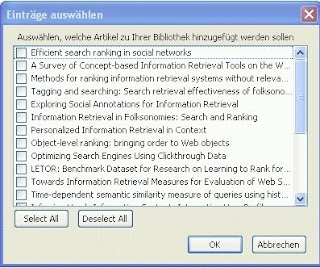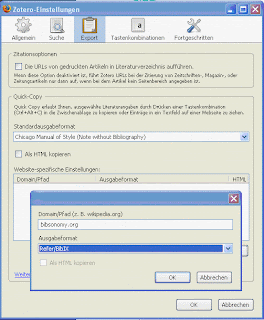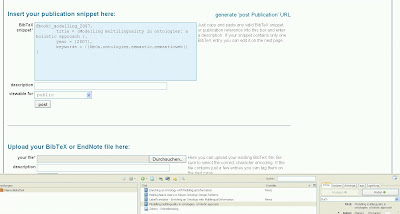- Tag Recommendations
- As part of the ECML PKDD 2009 conference we organized the Discovery Challenge, where the participants could test their tag recommendation methods on a BibSonomy dataset. A particularly interesting part of the challenge was the online evaluation which allowed the researchers to evaluate their approaches in the running system and actually show their recommendations to our users. The underlying infrastructure was provided by our new tag recommendation framework which proved to be very useful. It allowed us to distribute the tag recommendation work over several machines located all over the world. E.g., the winner's recommender was running in Canada.
- Research Projects
- Two new projects centered around BibSonomy started this year: PUMA, which will improve academic publication management in cooperation with the University Library Kassel, and Info 2.0 (in German), which investigates chances and risks of the Web 2.0 with respect to informational self-determination in cooperation with the Institute for Public Law.
- Plugins
- We released three new plugins which better integrate BibSonomy with other tools. The JabRef plugin allows you to synchronize your publication references with the bibliography manager JabRef and the Typo3 extension integrates publication lists from BibSonomy into the content management system Typo3. Just released two weeks ago and ready for testing is the new Firefox add-on which better integrates BibSonomy into the Firefox web browser. We will introduce this add-on in one of the next FOTWs.
- Personalization
- You now see similar users in your sidebar on which you can click to surf their posts in a personalized ranking. Furthermore, you can follow users you find interesting to stay tuned on what they post.
- Dumps of the Dataset
- Since quite some time we offer a dataset of the BibSonomy database in form of an SQL dump for research purposes to interested people. A web page now describes the available dumps and how to get one. Newly, the dumps also contain the users' tag relations.
- Development
- In an ongoing effort to open the BibSonomy source code to the public, we released some of the core modules in a public Maven repository. E.g., now you have access to our screen scrapers, which allow you to extract publication metadata from more than 60 digital libraries. Most modules have a GPL or LGPL license.
Next week we will present our current activities and discuss the plans for 2010.






















